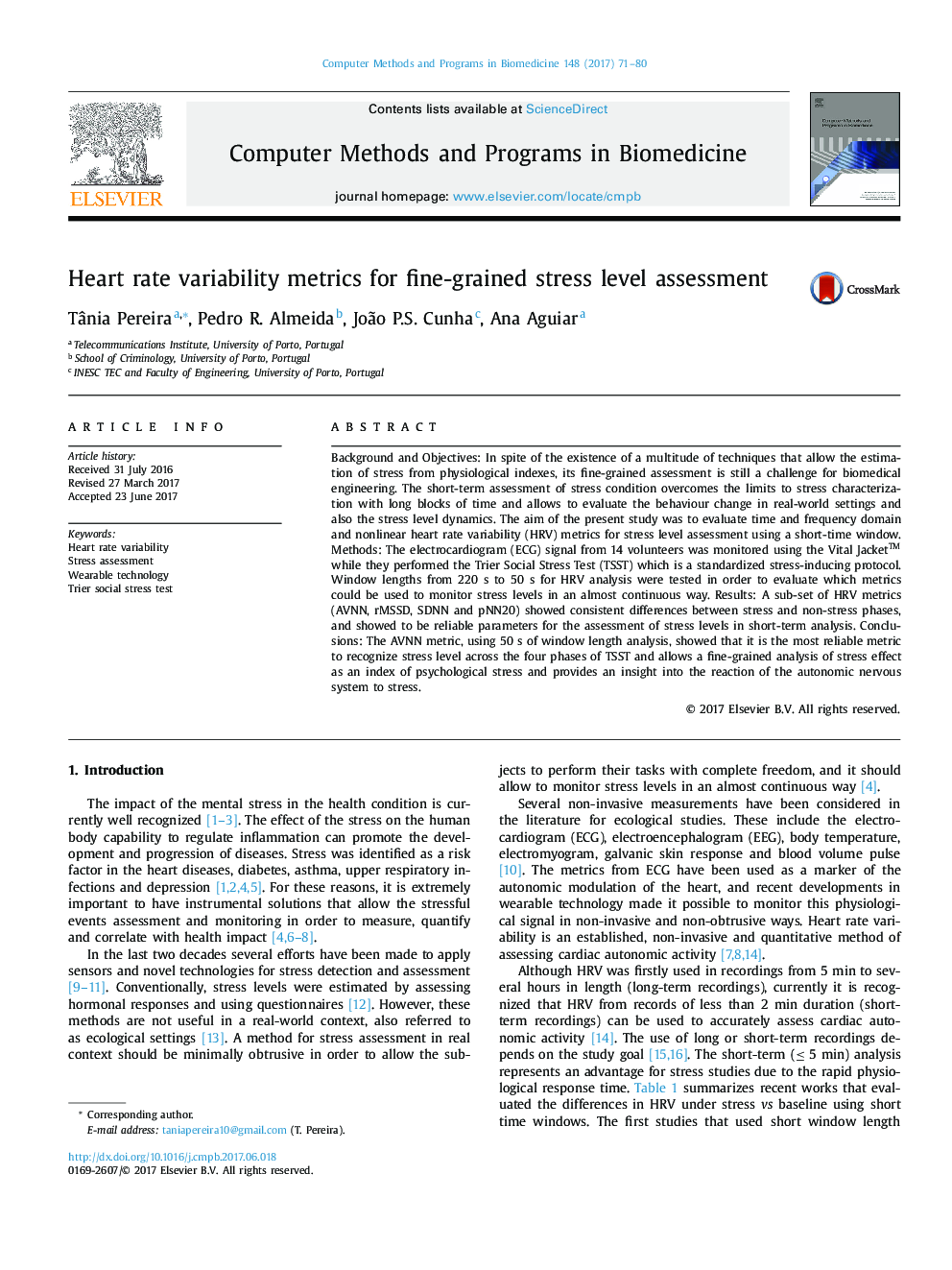| Article ID | Journal | Published Year | Pages | File Type |
|---|---|---|---|---|
| 4958064 | Computer Methods and Programs in Biomedicine | 2017 | 10 Pages |
Abstract
Background and Objectives: In spite of the existence of a multitude of techniques that allow the estimation of stress from physiological indexes, its fine-grained assessment is still a challenge for biomedical engineering. The short-term assessment of stress condition overcomes the limits to stress characterization with long blocks of time and allows to evaluate the behaviour change in real-world settings and also the stress level dynamics. The aim of the present study was to evaluate time and frequency domain and nonlinear heart rate variability (HRV) metrics for stress level assessment using a short-time window. Methods: The electrocardiogram (ECG) signal from 14 volunteers was monitored using the Vital JacketTM while they performed the Trier Social Stress Test (TSST) which is a standardized stress-inducing protocol. Window lengths from 220Â s to 50Â s for HRV analysis were tested in order to evaluate which metrics could be used to monitor stress levels in an almost continuous way. Results: A sub-set of HRV metrics (AVNN, rMSSD, SDNN and pNN20) showed consistent differences between stress and non-stress phases, and showed to be reliable parameters for the assessment of stress levels in short-term analysis. Conclusions: The AVNN metric, using 50Â s of window length analysis, showed that it is the most reliable metric to recognize stress level across the four phases of TSST and allows a fine-grained analysis of stress effect as an index of psychological stress and provides an insight into the reaction of the autonomic nervous system to stress.
Related Topics
Physical Sciences and Engineering
Computer Science
Computer Science (General)
Authors
Tânia Pereira, Pedro R. Almeida, João P.S. Cunha, Ana Aguiar,
